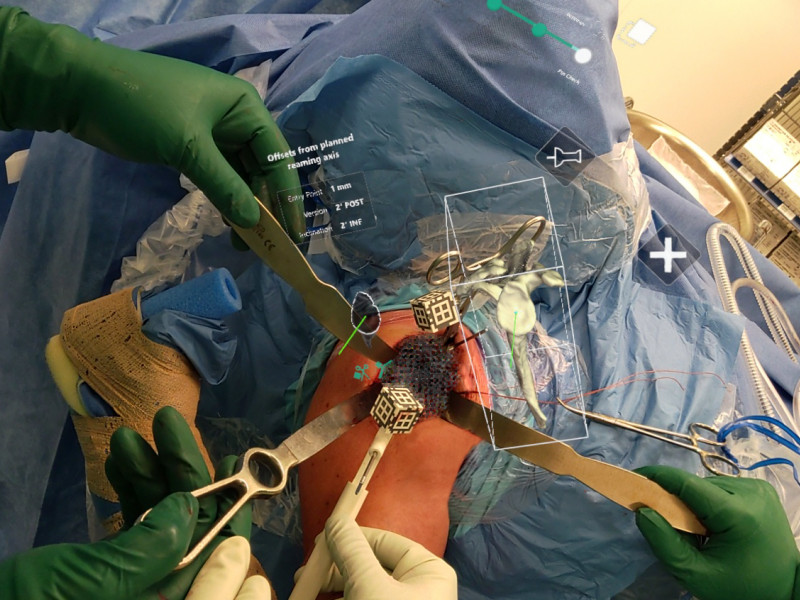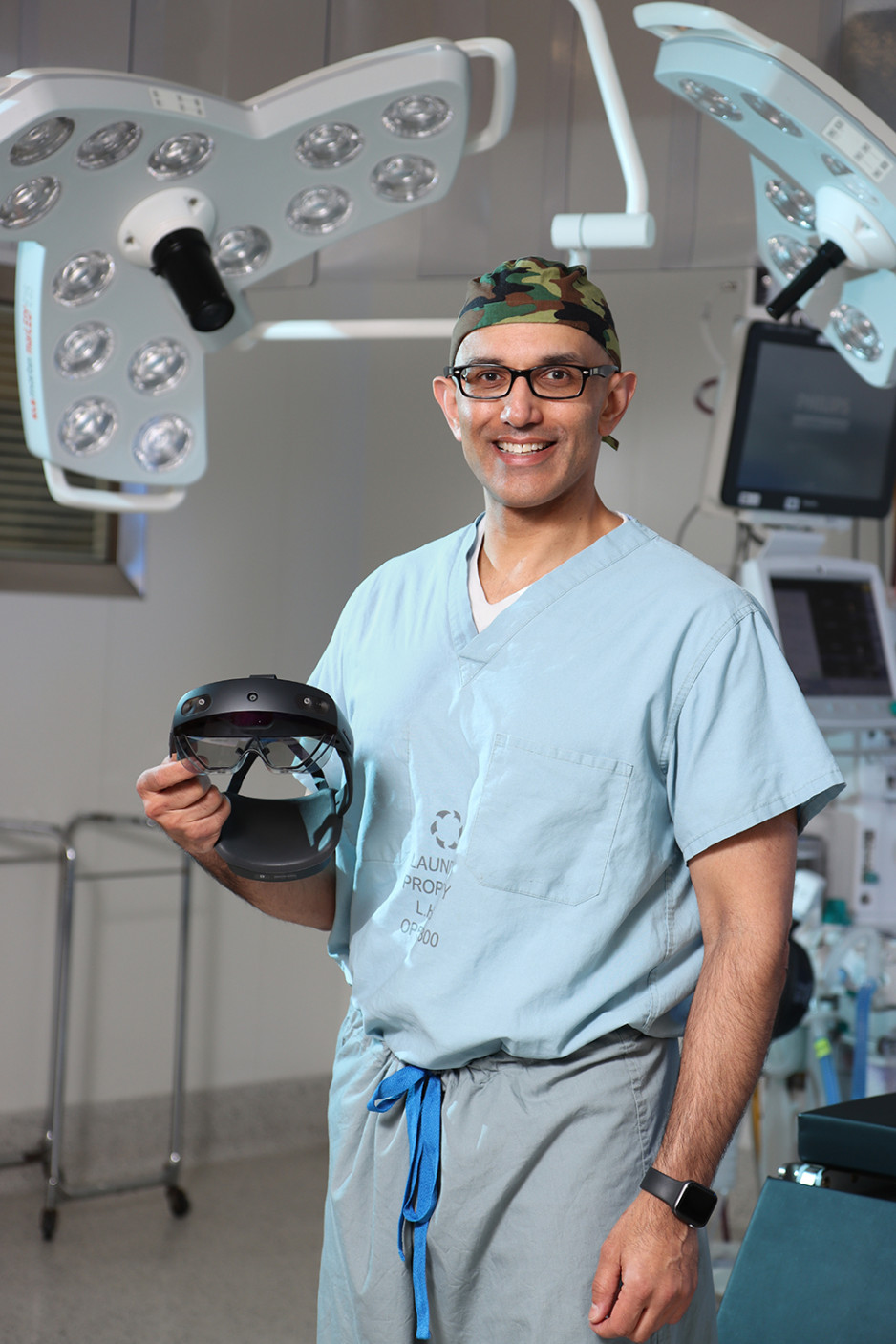Next-generation 3D imaging can guide surgeons’ hands
In a Canadian first, Dr. George Athwal at St. Joseph’s Health Care London has introduced the revolutionary next step in mixed reality technology that can track surgical instruments in real time and precisely point the way for surgeons. St. Joseph’s is one of two centres in the world to debut the technology.
London, Ontario - Mixed reality technology in the operating room just got smarter, and surgeons even more precise. In a Canadian first at St. Joseph’s Health Care London (St. Joseph’s), orthopedic surgeon Dr. George Athwal has introduced the ground-breaking next step in mixed reality technology that enables 3D imaging, similar to holograms, not only to act as a visual blueprint during shoulder replacement surgery but to track the surgical instruments and guide the surgeon’s hands in real time.
With this evolution of technology, a 3D representation of the patient’s anatomy and shoulder implant is overlaid on the surgical site, giving the surgeon the sci-fi superpower of X-ray vision while operating. Points of light provide vital markers for the surgeon to target. With the position of the instruments monitored by the system, Dr. Athwal has taken visionary surgery to a whole new level – literally and figuratively.
“Put simply, the system allows me to peer into and through the incision to the bones and other anatomical structures below. It knows exactly where my instruments are and can guide me where to make the most intricate adjustments to replicate the pre-surgical plan precisely,” explains Dr. Athwal.
Dr. Athwal, a surgeon with St. Joseph’s renowned Roth McFarlane Hand and Upper Limb Centre, became a global pioneer in developing and using digital 3D imaging technologies as tools in shoulder replacement surgery three years ago when he performed Canada’s first – and the world’s second – shoulder replacement using Stryker’s Blueprint® Digital Platform. The first generation of the futuristic system, which pairs stereotaxic (3D) technology with pre-operative planning software, allows a surgeon, wearing a special headset, to visualize and manipulate a digital rendering of the patient’s anatomy and the shoulder implant to plan the surgery pre-operatively. The surgeon can park this 3D map in space as an interactive reference in the operating room. It appears similar to a floating hologram.
The newest version of the technology is the Stryker Blueprint® MR Guidance solution. Using the same digital headset with specialized instrumentation, Dr. Athwal can now overlay and match the 3D representation onto the patient’s physical anatomy. Through a front-facing camera on the headset, the position and orientation of surgical instrumentation are tracked in the physical environment so imaging and guidance widgets can be displayed on the patient and in the surgeon’s line of sight without disrupting the surgeon’s normal workflow. The feedback in the heads-up display informs Dr. Athwal of where to position and orient his surgical instruments.
“What’s new and exciting is the giant leap in what we can now do with this technology to advance surgical precision,” says Dr. Athwal. “The 3D representations of the patient’s anatomy can, quite literally, point the way.”
The technology, he adds, has been shown to enable surgical plan execution within two millimetres and two degrees of a preoperative plan.
This latest version of the technology recently debuted with a global launch by Stryker that included St. Joseph’s and Mayo Clinic in the United States. The two centres are the first in the world to use it in the operating room.
Dr. Athwal was part of a team that worked with Stryker, a manufacturer of shoulder implants, and Microsoft Corporation, manufacturer of the HoloLens 2 – a holographic headset – to develop the mixed reality shoulder replacement technique. He has since performed numerous surgeries using the initial version of the technology and is in demand to provide demonstrations worldwide.
Involved in the development of this software and technology for the past 10 years, the London surgeon says “it feels like you’ve been watching your child grow and become increasingly successful at every stage.” He envisions this next generation of the system being particularly instrumental for more complex shoulder replacement patients – those with the greatest amount of bone deformity and disease.
“For the most challenging cases, where implant positioning is critical to successful patient outcome, this technology is a game changer.”
For more information, contact:
Dahlia Reich, Communication Consultant
St. Joseph’s Health Care London
519 646-6100 ext. 65294, Cell: 519 619-0971
@email
About St. Joseph’s Health Care London
Renowned for compassionate care, St. Joseph’s Health Care London is a leading academic health care centre in Canada dedicated to helping people live to their fullest by minimizing the effects of injury, disease and disability through excellence in care, teaching and research. Through partnership with Lawson Health Research Institute and our collaborative engagement with other health care and academic partners, St. Joseph’s has become an international leader in the areas of chronic disease management; medical imaging; specialized mental health care; rehabilitation and specialized geriatrics; and surgery. St. Joseph’s operates through a wide range of hospital, clinic and long-term and community-based settings, including: St. Joseph’s Hospital; Parkwood Institute; Mount Hope Centre for Long Term Care; and the Southwest Centre for Forensic Mental Health Care. sjhc.london.on.ca.
-
Next-generation 3D imaging
The latest evolution of mixed reality technology in the operating room is expected to be a "game changer" for more complex shoulder replacement patients.

